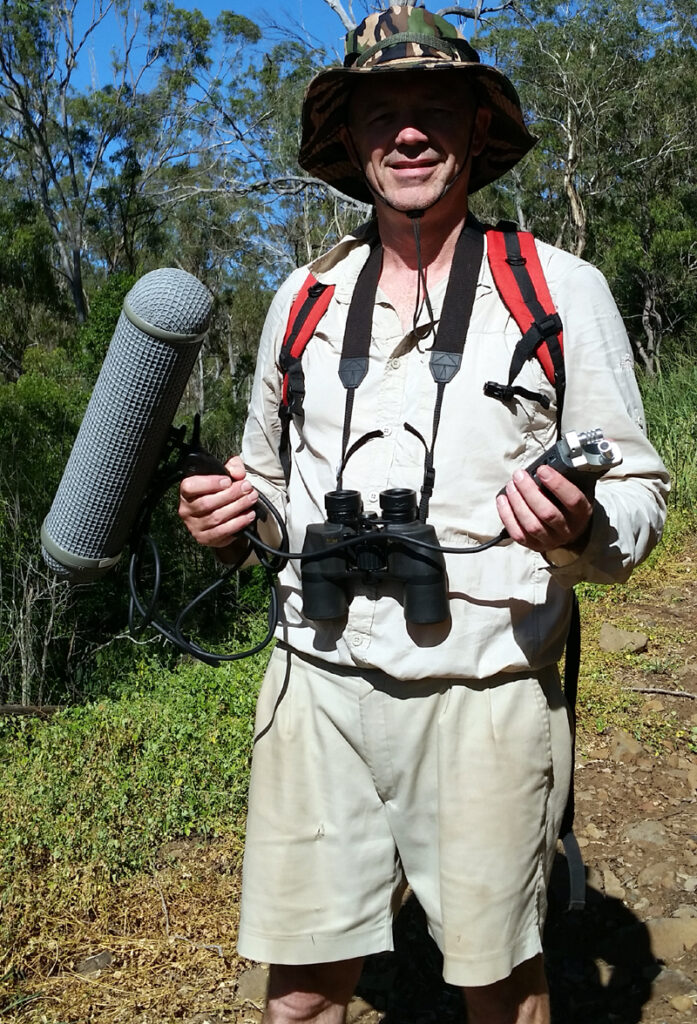
Recognising bird calls is one of the most effective ways to identify birds, however bird calls can vary around the country, and the same species can have different accents, dialects and calls depending on where they are.
To help myself and anyone else who needs to, I’ve started recording calls from the Toowoomba region and uploading them here as a point of reference.
This is only the first version of this page, and I’ll update it over time as I record new species, and also better examples of the species I have here now. Despite having some good gear, recording quality is greatly affected by the closeness of the bird calling, and the amount of background noise going on at the same time (especially insects).
I’ll also keep photos to a minimum in order to make the page load quickly. Birds are listed alphabetically by first name of the common name, no phylogenetic order is followed – this is just to make it quicker to find a particular species. Some birds are grouped together to aid in distinguishing between the calls of different species within that group- eg doves.
Please note: Bird calls should only ever be played out loud in the bush if there is an important conservation purpose for it – such as confirming the presence of a species in an area where it was not known before. They should not be used for the purpose of attracting a bird to you so you can photograph it. Call playback in the wild can cause significant stress to birds (especially overtly territorial ones) long after you and the playback have gone. Please don’t do it unless there is a valid scientific reason for it – these recordings are placed here for educational purposes.
In Queensland, use of call playback in bird surveys for scientific purposes may require animal ethics approval from the Department of Agriculture & Fisheries, or an institution that has an animal ethics committee.
BirdLife Australia has a policy of discouraging call playback, except for valid conservation purposes. Their full guidelines on ethical birding can be read here.
Doves and Pigeons
Brown cuckoo dove
Peaceful dove
Rose crowned fruit dove
Wompoo fruit dove
Scrub Wrens
Large billed scrubwren
White-browed scrubwren
Other birds (alphabetically)
Brown Gerygone
Cicada bird
Dollar bird
Eastern whipbird
Green Catbird
Grey shrike thrush
Kookaburra
Lewin’s honeyeater
Noisy friar bird
Olive backed oriole
Pied currawong
Rufous whistler
Sacred kingfisher
Spangled drongo
Superb fairy wren
Yellow-tailed black cockatoo

Equipment used
In my right hand is a Sennheiser ME 66 shotgun microphone in a Rycote wind shield with modular suspension, and in my left is a Zoom H4n digital audio recorder, the two are connected by a balanced audio lead.
Most calls are recorded in 16 bit 44.1 KHz mono wave format. If I want to record in stereo I use the 2 built in stereo mics on the Zoom, but they are not directional. The Zoom is operated in stamina mode for best battery performance. The mic is powered (using a K6 power module) and can be powered with a AA battery, or via phantom power from the Zoom. I usually put a battery in the mic to lessen the load on the ones in the Zoom.
In editing the tracks are normalised and occasionally I will apply some eq to lessen the bass and background noise. I usually do a short fade in and fade out on each clip as well. I’ve found cicadas can’t really be eliminated effectively. Playback on mobile phones tends to lessen some of the background noise. The files are dropped down to 128 KBps 44.1 KHz mono MP3 files for upload.

Wow….appreciate how much work goes into the recording….thx Scott
Stumbled across this collection and now starting to make sense of my garden visitors. Thank you!
Thanks for putting these lovely bird calls on your website. For anyone interested in making and sharing bird recordings there is a group called the Australian Wildlife Sound Recording Group. They have lots of helpful advice and produce a regular journal and CD.